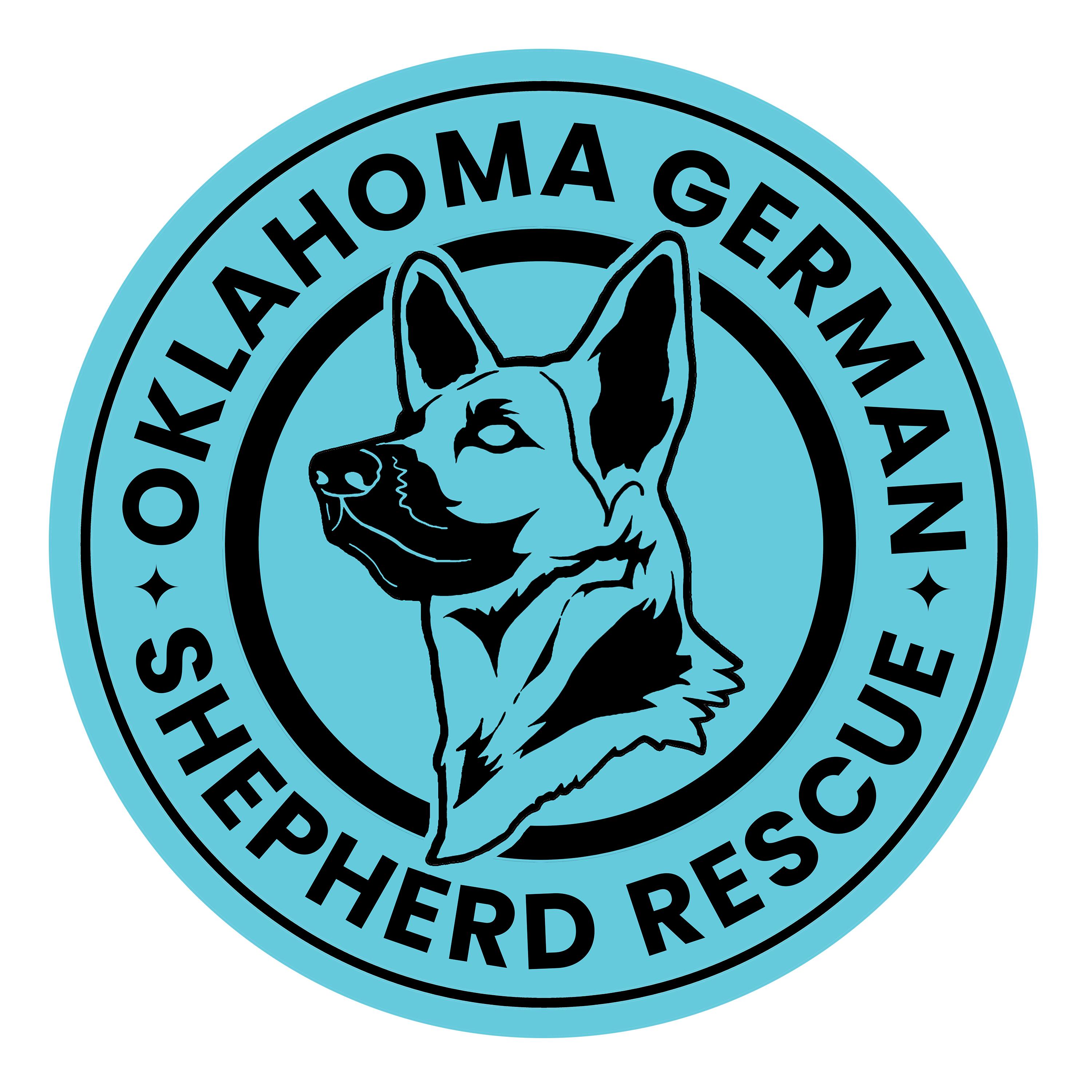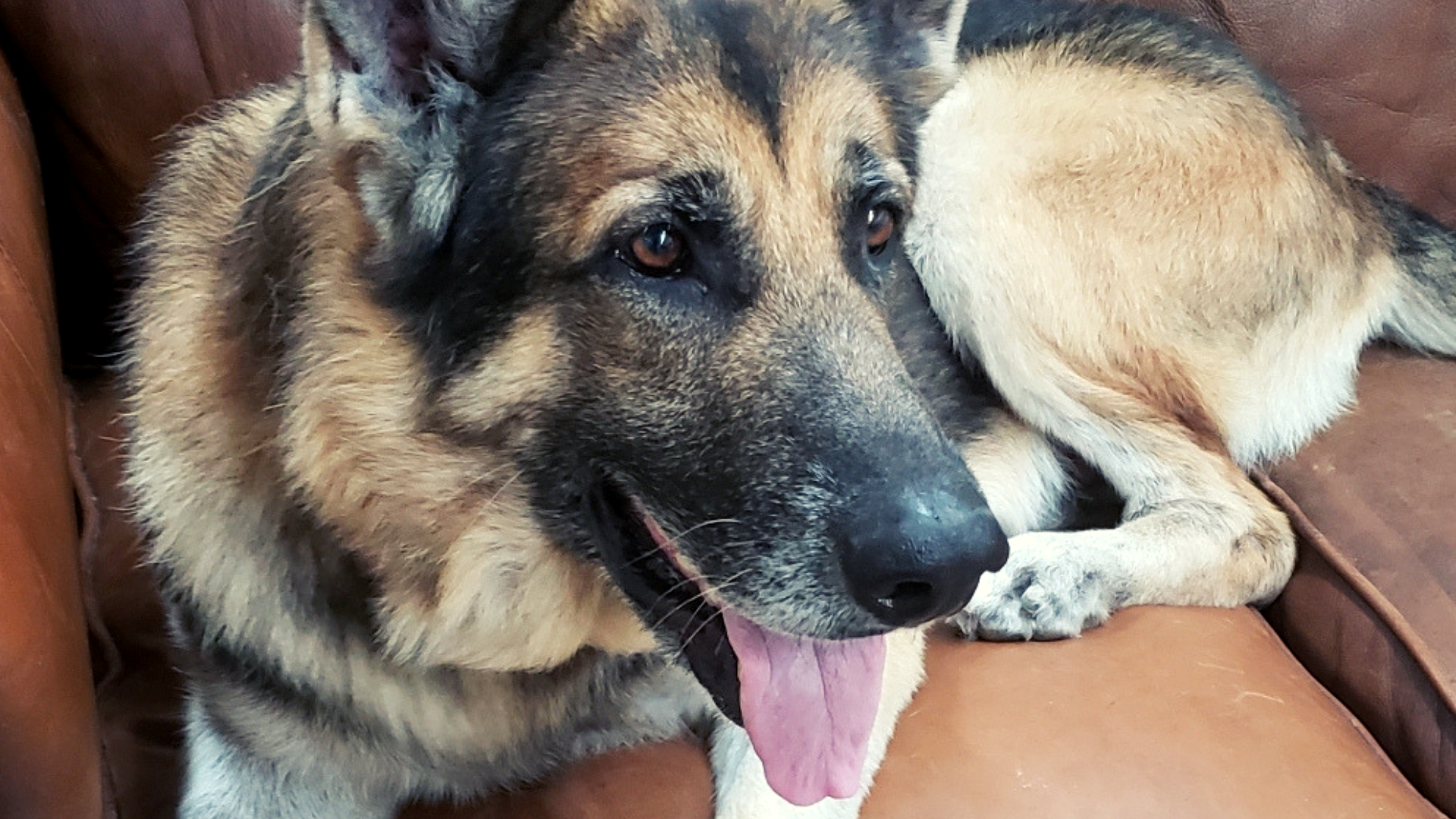Thank you for choosing to bring a rescue dog into your life! We know this is a big responsibility and are so grateful to you for making the choice to save a life. Rescue dogs can bring great joy, as they seem to ‘know’ somehow that they have been saved and they show their gratitude to their rescuers. However, rescue dogs often come from a home or environment that was not good for them in some way. And while dogs are wonderfully forgiving creatures, full rehabilitation can take some time. Follow these steps to ensure your new German Shepherd has the best chance for success in their new furever home!
Do’s and Don’ts for Introducing a German Shepherd into Your Home
- DO secure the dog in your vehicle on the way home.
Every rescue dog should be considered a flight risk until they have time to get used to you. This means securing the dog when you travel in the car. We recommend trying the leash to the headrest so the dog cannot bolt when you open the car door. Also, a slip lead is recommended over a collar and leash. Some dogs learn they can ‘back out’ of a standard collar and run away. Don’t leave the dog unsupervised in the backyard at first. Some dogs are easily able to climb high fences or dig out to get away.
- DO take your dog straight home.
Introduce the dog to their new home slowly. While on a leash, walk them around in the front yard, backyard and inside the house – letting them smell but not have free reign yet. Take them to the potty area and praise them for pottying outside.
- DO make sure to do proper introductions to other people and animals in the home.
Monitor all the dog’s interactions with the other dogs and people in the house until you are sure they will be no negative interactions.
- DO start the dog on a schedule immediately.
Keep in mind that your dog is probably used to a different schedule for eating, pottying, playing, napping, etc. and it will take them a little while to get accustomed to the new schedule. Start obedience and build structure for the dog right away as it will help your dog be successful. Having an ‘accident’ or two in the house is normal in the beginning as they learn their new space and schedule. - DO have a crate or safe, enclosed area for the dog.
This is for the safety of the dog and your home. If the dog is crate-trained, the dog can view the crate as their safe place, which is important when they are in a new environment and may be scared. If the dog is not crated-trained, consider crate training and at the least have an area where the dog can go to feel protected if needed. Keeping the dog in a crate when you can’t supervise them is also important because it prevents the dog from getting themselves in trouble by eating something dangerous or tearing up your belongings because they are anxious in their new environment.- Do put your dog in a crate for short periods of time while you are there to get them used to it.
- Do leave the house, even for a short errand, to show them that you will be back.
- DO respect your dog’s space.
This is very important. Give the dog time to adjust to you and your family by allowing them to solicit attention and interaction. Dogs are just like people in that they have their own personalities. Some are outgoing and extremely friendly while others are shy and need a little time to warm up to new people. Dogs in a new environment or who may be scared are also evaluating if you are a threat to their safety. They don’t know yet that you are their new family, so it is important to go slowly. If the dog goes to lay down for some alone time, respect that. If they come up to you and want affection, then give them some – but don’t go overboard, hugging all over the dog.
- DO ignore the dog at first.
This can be hard and can seem mean, but dogs speak a different language than humans. Making eye contact with the dog, speaking to them, approaching them, putting your face near their face, trying to pet them – can all be interpreted as aggression to a dog. This does not mean to leave the dog unsupervised. Watch them and observe their behavior, but let the dog choose when it feels safe enough to interact with you. Go at the dog’s pace, not your own. Again, they don’t know you, they don’t know they are in their forever home and don’t need to be afraid. - DO start to build a relationship with the dog right away.
Ask your dog to do something for reward and affection. By asking the dog to perform a behavior and then praising that behavior, you start a relationship built on the dog doing things for your affection. Try starting with a simple sit or “look at me” command. German Shepherds are working breed dogs and need a job to do. Letting them do their “job” and then praising them is a great way to build a relationship. Other ways are to work on training exercises or games together and to go on walks. - DO remember the most loving thing you can do for your dog is to provide structure and rules they can understand.
For a dog, learning consistent rules that they are able to follow gives a sense of control and builds confidence. Once you have gotten to know each other and your dog has confidence in you as a good leader, you will be able to show your affection in other ways and the dog will return it. Learn how the dog likes to receive affection. Dogs are individuals, just like people. Some dogs like head scratches, some prefer butt scratches or belly rubs. Some will tolerate hugging while some hate it. Learn to listen to your dog and read their behavior as to what they like and don’t like.
What Not To Do
- DO NOT take the dog to the pet store to shop for a new toy.
The dog does not know who you are yet. They have no reason to trust you and look to you for guidance. If the dog gets uncomfortable or stressed, it may feel the need to protect itself through aggression
- DO NOT take the dog to get a bath at a Dog Wash or Groomer.
The dog has never been to that place before and is not used to you or someone else’s touch. These locations can be loud, busy and full of things the dog has never seen or smelled before. It can be very frightening, and the stress of the environment combined with someone touching them all over may cause the dog to feel they need to protect themselves through aggression. - DO NOT invite all your friends and family over to meet your new dog.
Remember, it is the first time the dog has been to your home. The dog doesn’t know anything about this new place – it doesn’t smell like anywhere they’ve been before. They are not used to the way you live, or how you talk, or walk or the schedule of your day. The dog has no idea what to expect and this can be very overwhelming for a dog, even if the dog does not appear stressed to you. - DO NOT try to take a bone or toy or food bowl away from the dog until you know you can do this safely.
Some dogs may have had to struggle for food in the past and may show aggression if someone tries to take it away. They don’t know that they don’t need to worry about food anymore. Use caution and take time to get to know the dog and what training they may need. Also, do not think that because you can take a bone out of their mouth, that means your neighbor or friend can do it or should ever be allowed to do it. - DO NOT take the dog for a big outing.
You do not know what to expect from your dog and they do not know what to expect from you. The dog may be extremely terrified of something you don’t know about yet, like orange cars, or men in hats, or poodles in sweaters, etc. The dog may become reactive when they encounter these things and don’t know you well enough to look to you for guidance. Again, take some time and get to your dog, find out what they may struggle with and help them to become better. You are their second chance at a new life. Help them be successful! - DO NOT PUT YOUR DOG IN A SITUATION WHERE THEY CAN MAKE A MISTAKE.
This is then your fault – not the dog’s. - DO NOT hug and kiss your dog and lay on them or allow other people or kids to do this.
This is not your old dog you had for ten years that allowed you to hug on them. Pushing a dog past its comfort level could cause them to snap or bite at you. This could ruin the chances for the dog to have a great new life. As leaders, we humans need to control our emotions and think of the dog’s needs, not our own. Always keep in mind this dog has not had the advantage of one loving home all their life. The dog needs your guidance and protection. They need time to accept you, you family, and your lifestyle. Time does not mean hours or even days but weeks and perhaps months. Most rescuers find that dogs do not “blossom” into their true selves in a new home until about three months later.
- DO NOT physically correct your new dog in a threatening manner.
The dog may only see it as you being an unstable and unreliable leader that resorts to physical violence and they will protect themselves from what they see as a threat. Also, different dogs have different sensitivity levels. Some dogs have a high pain tolerance while others can be very sensitive and become frightened at the slightest correction. If you need help with training, you can reach out to us for recommendations or consult a trained professional. Look for trainers that do not use pain as a training tool and do not subscribe to dominance or alpha theories of dog behavior. As more studies on dog behavior have been conducted in the scientific community, these theories, which were popular at one time, have since been debunked.
- DO NOT compare this dog to your old dog.
It is not fair. This dog will never be that dog. It has its own personality and shouldn’t have to be compared and live up to the memory of your old dog. Let this dog be themselves and know that is OK. Love them for who they are and make new memories. Also, the dog you remember may have been thirteen years old. You may have forgotten how ornery a one-year-old German Shepherd could be!
If you have any questions or concerns, reach out to us for help! You can email us at oklahomagsr@gmail.com or message us on Facebook. Also, you can reach out to the person who facilitated your adoption. Thank you again for choosing a rescue dog!





